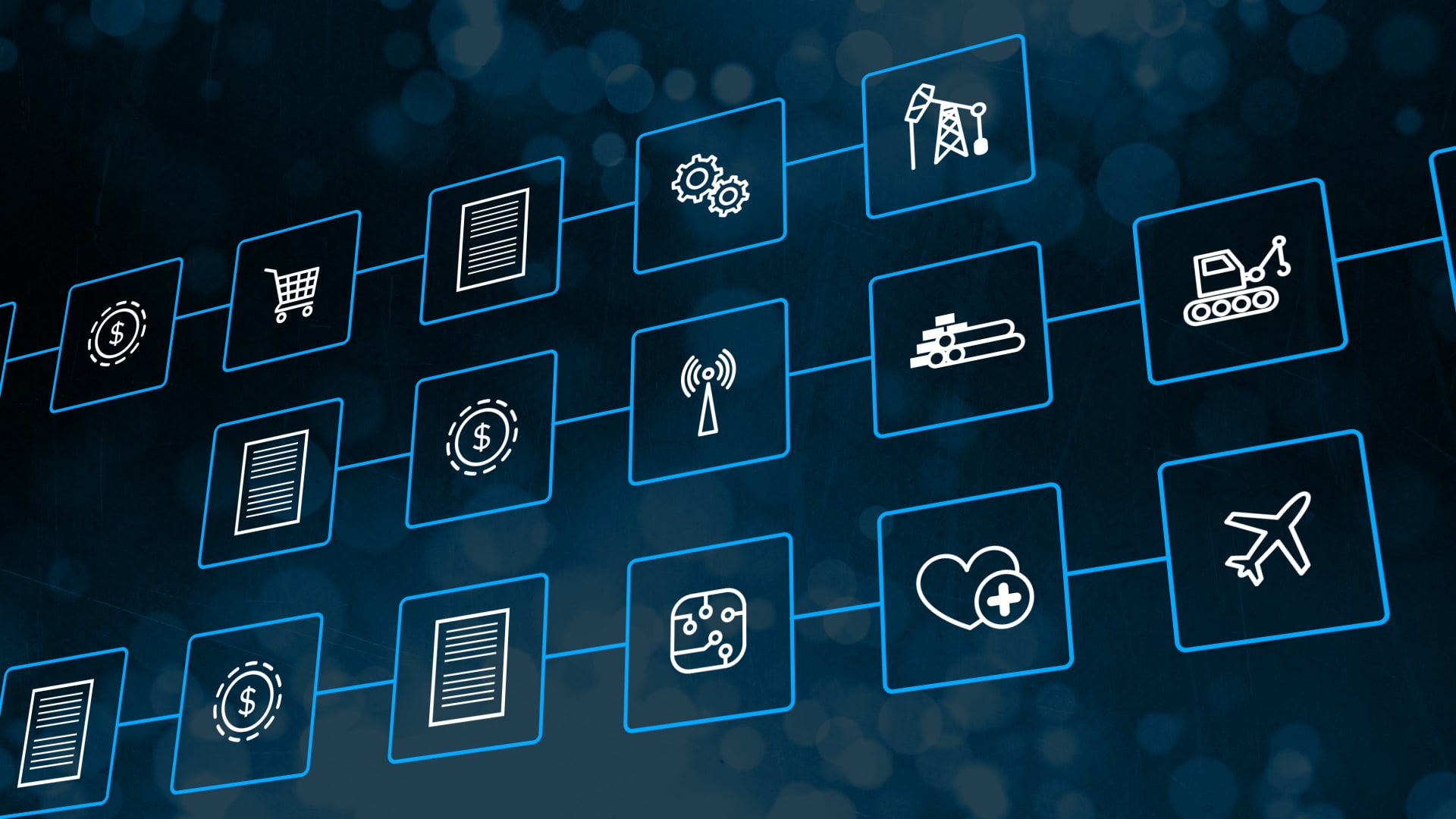Introduction
Blockchain technology has emerged as a revolutionary innovation, disrupting various industries and transforming the way transactions are conducted. Its decentralized and transparent nature has made it highly sought-after for its potential to enhance security, efficiency, and trustworthiness. However, one of the challenges that the blockchain ecosystem faces is the lack of interoperability.
Interoperability refers to the ability of different blockchain networks to communicate with each other and share information seamlessly. The absence of interoperability restricts the full potential of blockchain technology, limiting its impact and hindering widespread adoption.
In this article, we will delve into the concept of interoperability in blockchain and explore its significance. We will discuss the challenges and limitations associated with achieving interoperability, as well as explore the solutions that are being developed to overcome these obstacles. Additionally, we will highlight some notable examples of interoperability projects in the blockchain space. Finally, we will provide insights into the future outlook for interoperability in blockchain.
Blockchain technology has gained traction globally for its ability to provide secure and transparent solutions without the need for intermediaries. While individual blockchain networks function effectively within their own ecosystems, they often struggle to communicate and collaborate with other networks. This lack of interoperability hampers the potential benefits that could be derived from blockchain technology on a larger scale.
As the adoption of blockchain technology continues to grow, the need for interoperability becomes more crucial. Interoperability enables the seamless transfer of assets and data across different blockchain networks. It allows for increased collaboration, scalability, and efficiency, ultimately leading to a more interconnected and versatile blockchain ecosystem.
With interoperability, blockchain networks can leverage each other’s strengths, expanding the possibilities for innovative applications and solutions. Users and developers can combine the functionalities of different networks, harnessing diverse features to create more comprehensive and robust blockchain-based systems.
Furthermore, interoperability promotes decentralization by avoiding the concentration of power within a single network. It fosters competition and cooperation, encouraging the development of open standards and protocols that benefit the entire blockchain community.
In the following sections, we will explore the challenges and limitations that hinder the achievement of interoperability in blockchain, as well as the potential solutions and initiatives that are being implemented to address these issues.
Definition of Interoperability in Blockchain
Interoperability in the context of blockchain refers to the ability of different blockchain networks, platforms, or protocols to seamlessly communicate, interact, and exchange information and assets with each other. It entails establishing a common language and set of standards that allow for interoperability between disparate blockchain systems.
At its core, interoperability enables the transfer of value, data, and smart contracts across different blockchain networks. It ensures that transactions can occur between different networks without the need for intermediaries or additional manual processes. Interoperability eliminates silos and creates a more interconnected and efficient blockchain ecosystem.
In order to achieve interoperability, there needs to be a shared understanding of how data is structured, how transactions are validated, and how information is exchanged. This necessitates the establishment of common protocols, standards, and mechanisms that enable seamless communication and compatibility.
Interoperability can be achieved at different levels within the blockchain ecosystem. One level is the interoperability between different blockchain platforms, such as Ethereum, Bitcoin, or Hyperledger. This level focuses on enabling cross-platform communication and enabling interoperable applications and services.
Another level is the interoperability between different blockchain networks within the same platform. For example, there might be different consortiums or private blockchain networks running on the same platform, and interoperability between these networks allows for data sharing or asset transfers among the participants.
Moreover, there is the interoperability between blockchain and external systems, such as legacy systems or traditional databases. This type of interoperability allows for seamless integration of blockchain technology with existing infrastructure, enabling data exchange and synchronization between the blockchain network and external systems.
It’s important to note that interoperability goes beyond simply enabling transactional interoperability. It also encompasses semantic interoperability, which refers to the ability of different blockchain networks to understand and interpret data and transactions in a consistent way. Semantic interoperability ensures that information exchanged between different networks retains its meaning and can be accurately understood and utilized.
Overall, interoperability in blockchain is crucial to realizing the full potential of blockchain technology. By establishing common standards and protocols, it enables seamless communication and collaboration between different networks, platforms, and systems, ultimately enhancing the functionality, scalability, and efficiency of the entire blockchain ecosystem.
Why Interoperability is Important in Blockchain
Interoperability is a critical aspect of blockchain technology that holds immense importance for its widespread adoption and maximum utility. Without interoperability, blockchain networks remain isolated and limited in their potential impact. Let’s delve into the reasons why interoperability is crucial in the blockchain ecosystem.
1. Seamless Asset Transfer: Interoperability enables the smooth transfer of assets, such as cryptocurrencies, tokens, or digital assets, between different blockchain networks. It eliminates the need for multiple intermediaries or complex procedures, allowing for more efficient and cost-effective asset transfers.
2. Enhanced Collaboration: Interoperability encourages collaboration between different blockchain networks and stakeholders. It enables the exchange of data, smart contracts, and other information, fostering innovation and the development of new and comprehensive solutions.
3. Increased Scalability: Interoperability plays a vital role in addressing the scalability challenges faced by individual blockchain networks. By allowing networks to interconnect and share resources, interoperability promotes scalability, enabling the blockchain ecosystem to handle a higher volume of transactions and activities.
4. Versatility and Flexibility: Interoperability introduces flexibility and versatility to the blockchain landscape. It enables developers and users to utilize the strengths and capabilities of different blockchain networks, combining them to create powerful, customized solutions tailored to specific requirements.
5. Cross-Chain Communication: With interoperability, different blockchain networks can communicate with each other directly, eliminating the need for centralized exchanges or third-party platforms. This facilitates faster, secure, and convenient cross-chain transactions, opening up new opportunities for decentralized applications and services.
6. Avoiding Vendor Lock-In: Interoperability prevents users and developers from being locked into a single blockchain network or platform. Instead, it allows for freedom of choice, enabling stakeholders to select the most suitable blockchain networks or platforms for their specific needs and easily migrate between them if necessary.
7. Maximizing Network Effects: Interoperability amplifies the network effects of blockchain technology. When multiple blockchain networks are interoperable, they collectively contribute to a larger and more robust ecosystem, attracting more developers, users, and investors. This leads to increased liquidity, diversity, and overall value for the blockchain community.
8. Regulatory Compliance: Interoperability facilitates compliance with regulatory frameworks. By enabling secure and transparent data sharing between different networks, blockchain ecosystems can adhere to regulatory requirements without compromising privacy or integrity.
In summary, interoperability in blockchain is essential for seamless asset transfers, enhanced collaboration, increased scalability, versatility, cross-chain communication, avoiding vendor lock-in, maximizing network effects, and regulatory compliance. By embracing interoperability, the blockchain ecosystem can realize its full potential, driving widespread adoption and fostering innovation across industries.
Challenges and Limitations of Interoperability in Blockchain
While interoperability is a key objective in the blockchain ecosystem, achieving seamless communication and collaboration between different blockchain networks comes with its own set of challenges and limitations. Let’s explore some of the primary challenges associated with interoperability in blockchain.
1. Technological Heterogeneity: Blockchain networks employ different consensus algorithms, smart contract languages, and data storage models. These technological variations make it challenging to establish interoperability between networks that operate on different architectures. Bridging the technological gaps requires extensive research, development, and standardization efforts.
2. Scalability and Performance: Blockchain networks differ in terms of their transaction processing speeds, capacity, and scalability. Interoperability solutions must address these differences to ensure smooth and efficient communication between networks. The increased volume of data due to interoperability can also have an impact on the overall performance of the blockchain ecosystem.
3. Security and Privacy: Interoperability introduces potential security vulnerabilities, as the more networks that are interconnected, the larger the attack surface becomes. Ensuring secure communication and data exchange between networks without compromising privacy is a significant challenge that needs to be addressed.
4. Governance and Consensus: Blockchain networks often have different governance models and consensus mechanisms. Creating interoperability solutions that account for these differences and facilitate decision-making processes among interconnected networks requires careful coordination and consensus-building among stakeholders.
5. Compatibility with Legacy Systems: Integrating blockchain networks with existing legacy systems and databases can be complex. Achieving interoperability requires overcoming compatibility challenges, data mapping, and synchronization issues between blockchain and traditional systems.
6. Regulatory and Compliance Considerations: Interoperability brings cross-chain transactions and data sharing, which introduces challenges related to regulatory compliance. Blockchain networks must navigate through various legal and regulatory frameworks, ensuring interoperability does not compromise compliance requirements.
7. Lack of Standardization: The absence of standardized protocols and frameworks for interoperability poses a significant hurdle. The blockchain industry is still evolving, and developing universally accepted standards and protocols that facilitate interoperability remains an ongoing challenge.
8. Economic Incentives and Adoption: Blockchain networks, especially public ones, operate under different economic models and token ecosystems. Aligning economic incentives and encouraging adoption of interoperability solutions among various networks is crucial for successful implementation.
It’s essential to recognize that these challenges are not insurmountable, but rather represent areas that require focused research, collaboration, and innovation. Overcoming these limitations will pave the way for a more interconnected and efficient blockchain ecosystem.
Solutions for Achieving Interoperability in Blockchain
To address the challenges and limitations of interoperability in blockchain, several solutions and initiatives have been developed by the blockchain community. These solutions aim to establish seamless communication and data exchange between disparate blockchain networks. Let’s explore some of the key approaches for achieving interoperability in blockchain.
1. Interoperability Protocols and Standards: The development of interoperability protocols and standards is crucial in enabling communication between different blockchain networks. Initiatives such as the Interledger Protocol (ILP) and the Universal Interoperability Framework (UNIF) provide a common language and set of rules that govern cross-chain transactions and data exchange.
2. Cross-Chain Bridges: Cross-chain bridges act as connectors between different blockchain networks, allowing for the transfer of assets and data. These bridges utilize various mechanisms, such as atomic swaps, sidechains, or relay chains, to facilitate interoperability. Projects like Polkadot and Cosmos are frameworks that enable the creation of interoperable networks through the use of these bridges.
3. Oracles and Data Interoperability: Oracles serve as intermediaries that extract and transmit external data to the blockchain. They enable interoperability by providing access to off-chain data sources, allowing blockchain applications to interact with real-world information. Oracles play a crucial role in decentralized finance (DeFi) projects that require reliable data feeds, such as price or weather information.
4. Smart Contract Interoperability: Smart contract platforms like Ethereum allow for the creation of interoperability standards through smart contracts. Projects like Chainlink and Polkadot focus on establishing frameworks that enable smart contract interoperability by providing secure and reliable data feeds and interconnections between different blockchain networks.
5. Interoperability Frameworks: Interoperability frameworks provide a comprehensive approach to achieving interoperability by combining various solutions and tools. These frameworks offer a modular infrastructure that allows blockchain networks to connect and share assets and data seamlessly. Examples include Aion, Wanchain, and Icon, which provide interoperability solutions for blockchain networks.
6. Standardization and Collaboration: Standardization efforts aim to create universally accepted protocols and frameworks that enable interoperability between blockchain networks. Collaborative initiatives, such as the InterWork Alliance and Enterprise Ethereum Alliance, bring together industry leaders to develop common standards and promote interoperability across different blockchain platforms.
7. Research and Development: Continued research and development efforts are essential to advance interoperability solutions in blockchain. Academic institutions, industry consortia, and open-source communities contribute to the evolution of interoperability through funding research projects and sharing findings and best practices.
By employing these solutions, stakeholders in the blockchain ecosystem are actively working towards achieving seamless interoperability between different blockchain networks. Collaboration, standardization, and technological innovation play vital roles in driving the progress of interoperability efforts, ultimately facilitating the adoption and scalability of blockchain technology.
Examples of Interoperability Projects in Blockchain
Several projects and initiatives have emerged to address the challenge of interoperability in the blockchain ecosystem. Let’s explore some notable examples of interoperability projects that are making significant progress in enabling seamless communication and collaboration between different blockchain networks.
1. Polkadot: Polkadot is a multi-chain platform designed to facilitate interoperability between different blockchain networks. It operates through a relay chain and parachains, enabling secure asset transfers and cross-chain communication. Polkadot’s architecture allows for the creation of interoperable applications and services, providing scalability and flexibility for the blockchain ecosystem.
2. Cosmos: Cosmos is a decentralized network of independent blockchains that aims to achieve interoperability through a Hub-and-Zone model. The hub serves as a communication layer, facilitating transactions and data exchange between various participating blockchains. Cosmos aims to create an internet of blockchains, enabling seamless interoperability and fostering collaboration across different blockchain networks.
3. Chainlink: Chainlink is a decentralized oracle network that plays a crucial role in achieving data interoperability in blockchain. It connects smart contracts to real-world data, enabling blockchain applications to access and utilize off-chain information. Chainlink ensures the accuracy and reliability of data feeds, enhancing the capabilities and functionality of interoperable blockchain networks.
4. Wanchain: Wanchain is a cross-chain platform that provides interoperability between different blockchain networks, including Ethereum, Bitcoin, and others. It allows for secure asset transfers and data exchange through its decentralized bridges. Wanchain aims to enable frictionless interoperability, empowering users to freely transfer value across different blockchain ecosystems.
5. ICON: ICON is a blockchain protocol that facilitates interoperability by connecting independent blockchain communities through its network. It aims to overcome the challenges of cross-chain communication and enable the exchange of assets and data between different blockchain networks. ICON’s vision is to create a global decentralized network where different blockchain communities can collaborate and interact seamlessly.
6. Aion: Aion is an interoperable blockchain platform that enables communication and data exchange between different blockchain networks. It utilizes a network of bridges, called Aion Bridges, to connect disparate blockchains, allowing for secure asset transfers and interoperability. Aion focuses on providing a scalable and efficient solution for the seamless interoperability of blockchain networks.
These projects serve as examples of the innovative efforts being made to achieve interoperability in the blockchain space. By leveraging various technological approaches, such as cross-chain bridges, smart contracts, oracles, and interoperability frameworks, these projects are driving the progress of interoperability and establishing a more connected and efficient blockchain ecosystem.
Future Outlook for Interoperability in Blockchain
The future outlook for interoperability in the blockchain ecosystem is promising, driven by the increasing recognition of its importance and the concerted efforts of various stakeholders. Here are some insights into what lies ahead for interoperability in blockchain:
1. Evolving Standards and Protocols: As the blockchain industry matures, the development of open and widely accepted standards and protocols will be crucial for achieving seamless interoperability. Continued collaboration and standardization efforts within the blockchain community will lead to the establishment of common frameworks that facilitate communication and data exchange between different blockchain networks.
2. Increased Cross-Chain Collaboration: The concept of cross-chain collaboration will gain more traction in the future. Blockchain networks will actively seek opportunities to collaborate and share resources, combining their strengths to create more powerful and comprehensive solutions. This collaboration will drive innovation, foster interoperability, and lead to the development of new use cases and applications.
3. Global Interoperability Initiatives: Industry associations, consortia, and regulatory bodies will play crucial roles in promoting global interoperability initiatives. These organizations will work towards creating interoperability frameworks, best practices, and guidelines to facilitate secure, compliant, and efficient communication between blockchain networks across different jurisdictions.
4. Interoperability across Different Sectors: Interoperability will extend beyond the financial sector and penetrate other industries such as supply chain management, healthcare, energy, and more. The ability to seamlessly exchange data, assets, and contracts across different blockchain networks will revolutionize these industries, leading to increased transparency, efficiency, and collaboration.
5. Interoperability with Traditional Systems: Integrating blockchain technology with traditional systems and legacy infrastructure will continue to be a focus. Interoperability solutions will enable smooth data exchange and synchronization between blockchain networks and centralized databases, allowing for seamless integration and coexistence between blockchain and traditional systems.
6. Research and Innovation: Research and development efforts will drive continuous innovation in interoperability solutions. Academia, industry consortiums, and open-source communities will contribute to advancing the field through funding research projects, fostering collaboration, and exploring novel approaches to achieving interoperability in blockchain.
7. Enhanced Scalability and Performance: Interoperability solutions will address the scalability and performance challenges associated with connecting multiple blockchain networks. Through advancements in consensus algorithms, technology optimizations, and network architectures, interoperability protocols will enable secure and efficient communication between networks without compromising speed or capacity.
Overall, the future of interoperability in blockchain holds great potential. As the technology evolves, stakeholders will work together to overcome challenges, establish common standards, and foster collaboration across different blockchain networks. Interoperability will drive innovation, expand use cases, and ultimately lead to the widespread adoption of blockchain technology on a global scale.
Conclusion
Interoperability is a critical aspect of blockchain technology that holds immense importance for its widespread adoption and maximum utility. The ability to seamlessly communicate and collaborate between different blockchain networks is key to unlocking the full potential of blockchain technology.
In this article, we explored the definition of interoperability in blockchain and discussed its significance. We examined the challenges and limitations that hinder the achievement of interoperability, as well as the solutions and initiatives that are being developed to overcome these obstacles.
We highlighted examples of interoperability projects that are making significant progress in enabling seamless communication and collaboration between different blockchain networks. These projects are driving the evolution of interoperability standards, cross-chain bridges, smart contract interoperability, and interoperability frameworks.
The future outlook for interoperability in blockchain is promising. We can expect to see evolving standards and protocols, increased cross-chain collaboration, global interoperability initiatives, interoperability across different sectors, integration with traditional systems, research and innovation, as well as enhanced scalability and performance.
It is clear that achieving interoperability in blockchain is crucial for the growth and maturation of the technology. By breaking down the barriers between different blockchain networks, we can unlock new possibilities, foster collaboration, and drive innovation across industries.
The blockchain community, including developers, researchers, industry associations, and regulators, must continue to work together to overcome the challenges and drive interoperability forward. With concerted efforts and a focus on standardization, collaboration, and technological advancements, we can create a future where blockchain networks seamlessly communicate and revolutionize various sectors.
As interoperability in blockchain continues to develop, it will create a more interconnected, efficient, and versatile blockchain ecosystem. The benefits of interoperability extend beyond individual blockchain networks, contributing to the growth of the entire blockchain community and paving the way for a decentralized future.

























